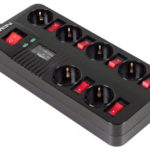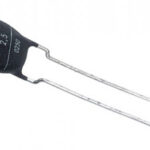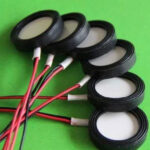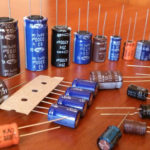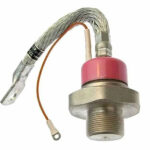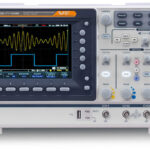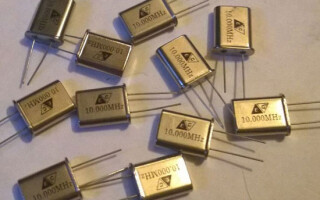A quartz resonator is an electronic device built on the piezoelectric effect, as well as mechanical resonance. It is used by radio stations, where it sets the carrier frequency, in hours and timers, fixing an interval of 1 second in them.
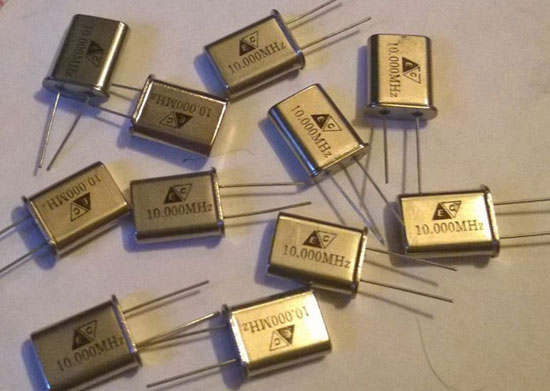
Content
What is it and why is it needed
The device is a source that provides high-precision harmonic oscillations. It has, when compared with analogues, greater work efficiency, stable parameters.
The first samples of modern devices appeared on radio stations in 1920-1930. as elements with stable operation, capable of setting the carrier frequency. They are:
- they replaced the Rochelle salt crystal resonators, which appeared in 1917 as a result of the invention of Alexander M. Nicholson and were characterized by instability;
- they replaced the previously used circuit with a coil and a capacitor, which did not differ in high quality factor (up to 300) and depended on temperature changes.
A little later, quartz resonators became an integral part of timers and clocks. Electronic components with a natural resonant frequency of 32768 Hz, which in a binary 15-bit counter sets a time interval of 1 second.
Devices are used today in:
- quartz watches, providing them with the accuracy of work, regardless of the ambient temperature;
- measuring instruments, guaranteeing them high accuracy of indicators;
- marine echo sounders, which are used in research and creation of bottom maps, fixing reefs, shallows, searching for objects in the water;
- circuits corresponding to reference oscillators synthesizing frequencies;
- schemes used for wave indication of SSB or telegraph signal;
- radio stations with a DSB-signal with an intermediate frequency;
- band pass filters superheterodyne type receivers, which are more stable and good quality than LC filters.
Devices are manufactured with different cases. They are divided into output, used in bulk mounting, and SMD, used in surface mounting.
Their work depends on the reliability of the switching circuit, which affects:
- frequency deviation from the required value, parameter stability;
- device aging rate;
- load capacity.
Properties of a quartz resonator
Surpasses previously existing analogues, which makes the device indispensable in many electronic circuits and explains the scope of the device.This is confirmed by the fact that in the first decade since the invention in the United States (not counting other countries) more than 100 thousand pieces of devices have been produced.
Among the positive properties of quartz resonators, which explain the popularity and demand for devices:
- good quality factor, the values of which - 104-106 - exceed the parameters of previously used analogues (they have a quality factor of 300);
- small dimensions, which can be measured in fractions of a millimeter;
- resistance to temperature, its fluctuations;
- long service life;
- ease of manufacture;
- the ability to build high quality cascade filters without using manual settings.
Quartz resonators also have disadvantages:
- external elements allow you to adjust the frequency in a narrow range;
- have a fragile structure;
- do not tolerate excessive heat.

The principle of operation of a quartz resonator
The device works on the basis of the piezoelectric effect, which manifests itself on a quartz plate, and at low temperature. The element is cut from a single quartz crystal, observing the specified angle. The latter determines the electrochemical parameters of the resonator.
The plates are coated on both sides with a layer of silver (platinum, nickel, gold are suitable). Then they are firmly fixed in the housing, which is sealed. The device is an oscillatory system that has its own resonant frequency.
When the electrodes are subjected to an alternating voltage, the quartz plate, which has a piezoelectric property, bends, contracts, shifts (depending on the type of processing of the crystal). At the same time, a counter-EMF appears in it, as it happens in an inductor located in an oscillatory circuit.
When a voltage is applied with a frequency coinciding with the natural vibrations of the plate, then resonance is observed in the device. Simultaneously:
- an element of quartz increases the amplitude of oscillations;
- the resistance of the resonator is greatly reduced.
The energy that is needed to maintain oscillations is low in the case of equal frequencies.
Designation of a quartz resonator on the electrical circuit
The device is designated similarly to a capacitor. Difference: a rectangle is placed between the vertical segments - the symbol of a plate made of quartz crystal. The sides of the rectangle and the capacitor plate are separated by a gap. Nearby on the diagram there may be a letter designation of the device - QX.
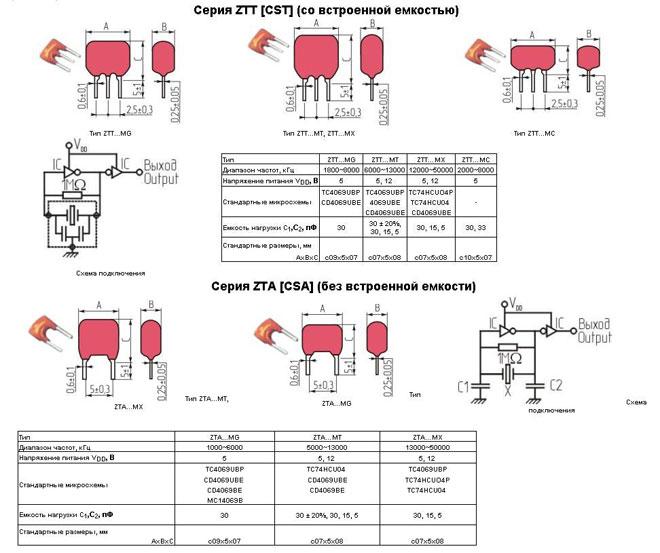
How to test a quartz resonator
Problems with small appliances arise if they receive a strong blow. This happens when devices containing resonators in the design fall. The latter fail and require replacement according to the same parameters.
Checking the resonator for performance requires a tester. It is assembled according to a circuit based on a KT3102 transistor, 5 capacitors and 2 resistors (the device is similar to a quartz oscillator assembled on a transistor).
The device must be connected to the base of the transistor and the negative pole in the connected connections, connections, protecting by installing a protective capacitor. The power supply of the switching circuit is constant - 9V. Plus, they connect to the input of the transistor, to its output - through the capacitor - a frequency meter, which fixes the frequency parameters of the resonator.
The scheme is used when setting up the oscillation circuit.When the resonator is in good condition, when connected, it produces oscillations that lead to the appearance of an alternating voltage at the emitter of the transistor. Moreover, the voltage frequency coincides with a similar characteristic of the resonator.
The device is faulty if the frequency meter does not detect the occurrence of a frequency or determines the presence of a frequency, but it is either much different from the nominal value, or it changes greatly when the case is heated with a soldering iron.
Similar articles:
